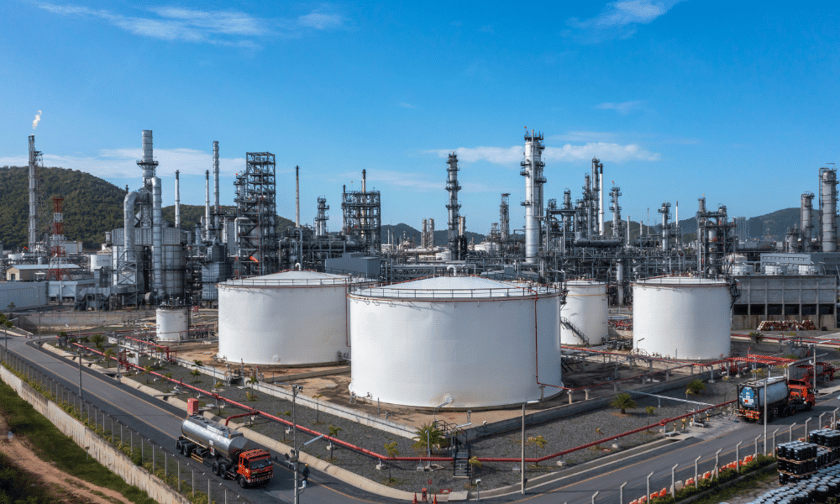

On March 27, a fire at a substation near London Road meant there was no electricity to power the trains. Just weeks earlier, Heathrow Airport also experienced disruptions caused by a fire at a nearby electrical substation.
Professor Gareth Taylor, told the Institution of Engineering and Technology (IET): “Reports suggest the fire started by a major fault with a voltage transformer in the substation, but the cause of the fire will be looked at and confirmed by a detailed forensic investigation.”
Highlighting the need to understand risk across the power sector, Katherine Gerber, head of energy transition for the Americas at AXA XL, told Insurance Business: “Operational risks are particularly prevalent and include exposures such as physical damage, equipment failure, human error, and maintenance issues that can lead to costly downtime, resulting in revenue losses and increased operational costs.”
Beyond operations, power generation stations face escalating environmental and regulatory risks.
“Weather presents a real threat to power stations as well. Few businesses can hide from severe weather and natural disasters like hurricanes or tornadoes,” said Gerber.
To mitigate this, she added that “comprehensive property insurance to address physical damage and business interruption is essential.”
Gerber also pointed to regulatory pressure around emissions and waste. “Power generation stations also face environmental risks that stem from emissions and waste management. Adhering to environmental regulations is critical, as non-compliance can result in hefty fines and unexpected cleanup costs,” she said.
Given the environmental exposure, she recommends that the sector consider “environmental liability insurance to cover potential pollution claims and regulatory fines.”
Gerber also noted additional pressure from market dynamics and legal changes.
“Regulatory risks and market fluctuations also pose challenges to power generation operations,” she said. “The heavily regulated nature of the power industry means that changes in laws or regulations can significantly impact operations and profitability.”
When it comes to commodity pricing volatility, Gerber said, “while market risks like fluctuations in energy prices can impact profitability, these may be better managed through financial products such as derivatives.”
Gerber advised that brokers should adopt a customised approach when advising on insurance for the power sector.
She stressed that brokers “should prioritise a tailored approach to insurance coverage for energy technologies, beginning with a thorough risk assessment specific to each type of energy source.”
Each generation method presents different exposures, and understanding them is key.
According to Gerber, “brokers should focus on understanding these nuances to provide the most effective coverage for their clients.”
Some facilities may also require more specialised support: “Brokers should consider incorporating coverage for emergency response and disaster recovery, particularly for facilities such as nuclear and wind power plants that face unique challenges,” Gerber said.
As technologies evolve, so must brokers' awareness.
According to Gerber: “The unique risks of each power generation type necessitate specialised insurance solutions.”
To stay ahead, Gerber suggested, “staying updated on the latest regulations affecting each energy type is also essential for maintaining compliance and providing effective solutions.”
Climate change is raising the stakes for insurability, with severe weather now driving up claim frequency and costs. According to Aon's 2025 Climate and Catastrophe Insight report, natural disasters in 2024 caused $368 billion in economic losses worldwide, with $140 billion in insured losses, making it the sixth costliest year on record for insurers.
Gerber suggested that brokers can support clients by focusing on resilience: “Brokers can turn to insurance carriers, often with risk engineering or consulting teams, to help clients invest in resilience and adaptation measures, such as retrofitting facilities to withstand extreme weather.”
Another critical issue is cybersecurity: “Operational risks, such as equipment failure, safety protocols, and cybersecurity threats, significantly shape the insurance needs of power generation facilities,” Gerber emphasised.
As facilities become more connected, vulnerabilities increase. According to Gerber, “cybersecurity threats also pose a growing risk, as digital exposures, misconfigurations, and manual/digital connection vulnerabilities can disrupt operations and compromise sensitive data, making cyber liability insurance essential for protecting against data breaches and related financial consequences.”
The message is that brokers must stay informed about industry trends and regulatory changes to recommend relevant coverage options while educating clients on best practices for risk management and safety protocols.
